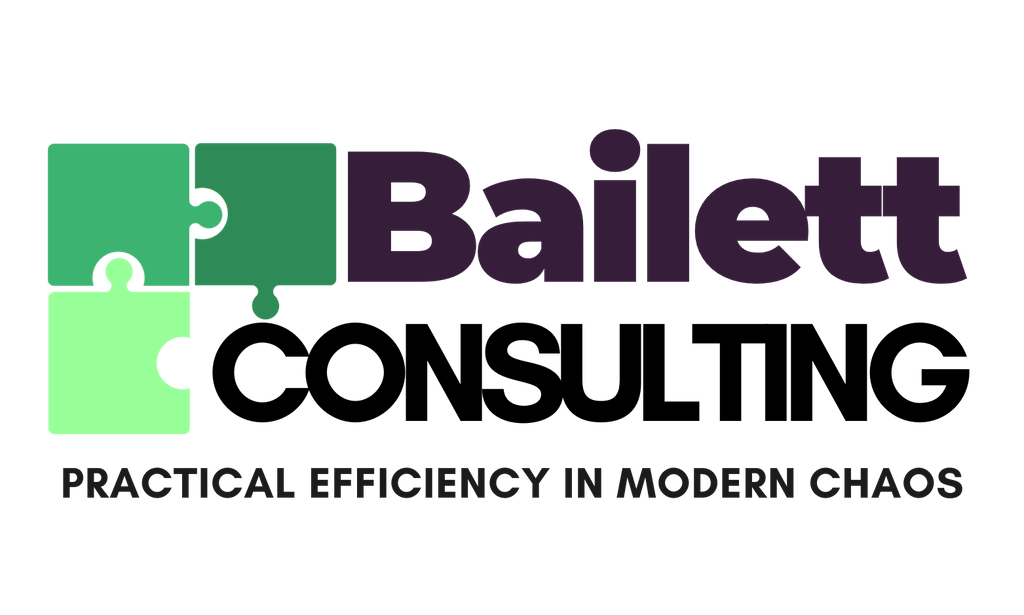Top 3 Time Blocking Mistakes and How to Fix Them
Time blocking is usually the answer to everything. There are tons of websites, articles, blog posts and social media content surrounding time blocking. As far as productivity goes, time blocking is the hack to “fix all your problems.” Time blocking by definition is assigning specific times of the day to complete specific tasks. This will help you organize your day, reduce decision fatigue, and stay focused on what really matters, in theory.
The trouble is there are a lot of folks out there that say time blocking does not work. Many people try time blocking, only to feel frustrated when it does not work like they expect. Why does time blocking work for some and not for others? Well, there are some common mistakes that hinder its effectiveness.
Here are the top three time blocking mistakes people make and how to avoid them.
Mistake #1: Overloading Your Schedule
One of the most common mistakes is treating time blocking as a way to cram every minute of every day with tasks. While it is tempting to try and maximize every hour, overloading your schedule leaves no room for flexibility. The fact is, life happens, tasks take longer than expected, meetings run over the allotted time, there will be interruptions, and decision fatigue can quickly make your day spiral out of control.
Why This Happens
People, in general, overestimate how much they can accomplish in a day. Just because you “want” to get these tasks done today does not mean it is executable in the time frame you have allowed with all the other commitments for that day. When you schedule every minute back to back you are setting yourself up for failure, as even one meeting taking 10 minutes longer can throw off your entire plan.
The Fix
Create Buffer Time: Schedule blocks of time specifically for flexibility, such as 15-30 minutes between everything you schedule. This will allow time between meetings or tasks for true transition time helping you handle tasks that take longer or meetings that run over time.
Plan Interruptions Time: Plan a time block one or two times a day to handle the interruptions that happen within that day. Knowing you have time to handle the interruptions later will allow you to be able to focus more on the important tasks.
Batch Similar Tasks: Group smaller, related tasks into one block instead of handling each task individually. For example, allocate an hour for responding to emails instead of checking your email each time one comes in.
Mistake #2: Trying to Block Every Task on Your Calendar
Another big mistake is attempting to schedule every single task you “have to do” into your calendar. Time blocking is not about blocking everything you have to do, it is about blocking the tasks that will get you to where you want to go. All tasks are not equal. Overloading your calendar with every single solitary thing that comes to your mind leaves no room for flexibility and makes your schedule feel rigid and overwhelming.
Why This Happens
People often think that putting everything on their calendar will make them more productive. They know they need to do all these things so if it is on the calendar they will do them, right? Wrong. Putting everything on the calendar can create unnecessary stress, making it harder to make real time adjustments, and is discouraging as there is no way all these things can be completed.
The Fix
Schedule Productivity Time: Dedicate blocks of time for focused work on high priority tasks. This ensures you are focusing on what moves the needle.
Take Breaks: Build short breaks into your schedule to recharge and maintain energy levels. A refreshed mind is far more productive.
Plan for Pick Up Time Each Week: Leave specific blocks of time in your schedule at the end of the week to revisit originally scheduled tasks that you did not complete. This ensures you can catch up on critical work and finish the week strong.
Mistake #3: Lack of Prioritization of Tasks
Even with a well structured calendar, your time blocking efforts can be ineffective without prioritizing your tasks. A lack of prioritization can lead you away from your goals. Without a clear understanding of which tasks truly matter, you may end up spending time on low value activities while neglecting important ones.
Why This Happens
Many people treat all tasks as equally important or allow perceived urgency to drive their decisions, leading to wasted time on tasks that do not align with their goals. This reactive approach keeps people in a cycle of only reacting to what happens to them instead of being proactive and completing the tasks that are for them.
The Fix
Use a Prioritization Method: Implement methods like The MoSCoW Method, Eisenhower Matrix, or ABC Method to rank tasks by importance and urgency. This will help you know which tasks to complete during your productivity time. For more about prioritization methods check out this blog. (LINK Prioritization Methods for Solopreneurs and Micro-Businesses)
Set Daily Priority: Identify your top 3 tasks to complete each day and place these in your productivity block. This ensures that your most critical tasks get done daily. Remember these are the tasks that are in line with your goals.
Review and Reflect: At the end of the day, assess if you completed the 3 tasks you had committed to for that day. If not, place what you did not complete as the top task or tasks to complete the following day.
Bonus Tips for Time Blocking Success
Start Small: If you are new to time blocking, begin with just 1-2 blocks per day. Gradually build up as you get more comfortable. Aim to get one personal block on your calendar and one work block to complete your prioritized tasks daily.
Utilize Productivity Techniques: Incorporate proven productivity techniques, like the Pomodoro Technique or Flowtime Technique, which alternates focused work sessions with short breaks. This approach allows for uninterrupted concentration while ensuring you stay refreshed and maintain momentum throughout the day. Check out our Productivity Techniques Blog
Plan Weekly: Spend 30 minutes at the end or the beginning of each week to set up your time blocks for the upcoming week. This ensures you start your week with a clear plan that includes time for your prioritized tasks.
Time blocking is a powerful tool. Progress is better than perfection. By avoiding these common mistakes and implementing the fixes, you can work to create a schedule that works for you, rather than a schedule that makes you feel crazy and is impossible to execute. Remember, the goal of time blocking is to be intentional with your time and craft a schedule that focuses on productivity.
Join us for our next Focused Work Days to test out how productivity techniques work and actually get things done.





